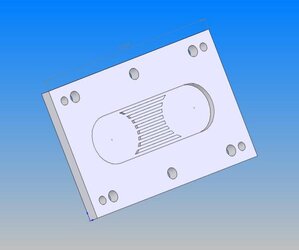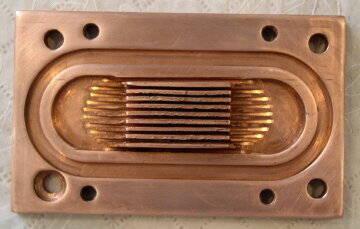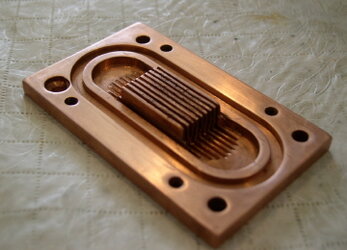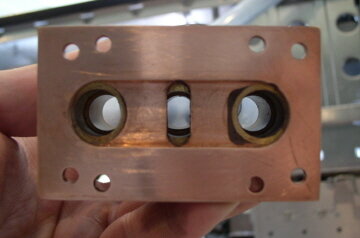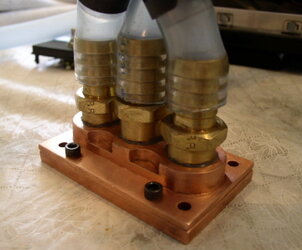- Joined
- Dec 8, 2002
- Location
- Suffolk, UK
Im trying to design a microchannel type block simlar to the whitewater but im having diffuculty finding some of the critical dimensions.
My first question is about the width of the inlet jet. How wide should this be considering i am using a eheim1250 pump? I gather this is a very important dimension and the optimal size veries with the size of pump you use.
My second question is should i leave a clearance between the top of each fin and the top of the block or do they need to touch so that the water is forced to flow through the channels? I i left a clearance would this help by decresing restriction? how dose this work in the Whitewater/RBX? See the attachment. there is currently a 4mm gap between the top of each fin and the top of the block but should it be bigger smaller or none??
Im planning to use 1x1mm channels is this ok? would they be better slightly deeper?
(the base thickness will be as small as possible)
My big problem is trying to design a block that works aswell as a whitewater witout attualy copying it
My first question is about the width of the inlet jet. How wide should this be considering i am using a eheim1250 pump? I gather this is a very important dimension and the optimal size veries with the size of pump you use.
My second question is should i leave a clearance between the top of each fin and the top of the block or do they need to touch so that the water is forced to flow through the channels? I i left a clearance would this help by decresing restriction? how dose this work in the Whitewater/RBX? See the attachment. there is currently a 4mm gap between the top of each fin and the top of the block but should it be bigger smaller or none??
Im planning to use 1x1mm channels is this ok? would they be better slightly deeper?
(the base thickness will be as small as possible)
My big problem is trying to design a block that works aswell as a whitewater witout attualy copying it

